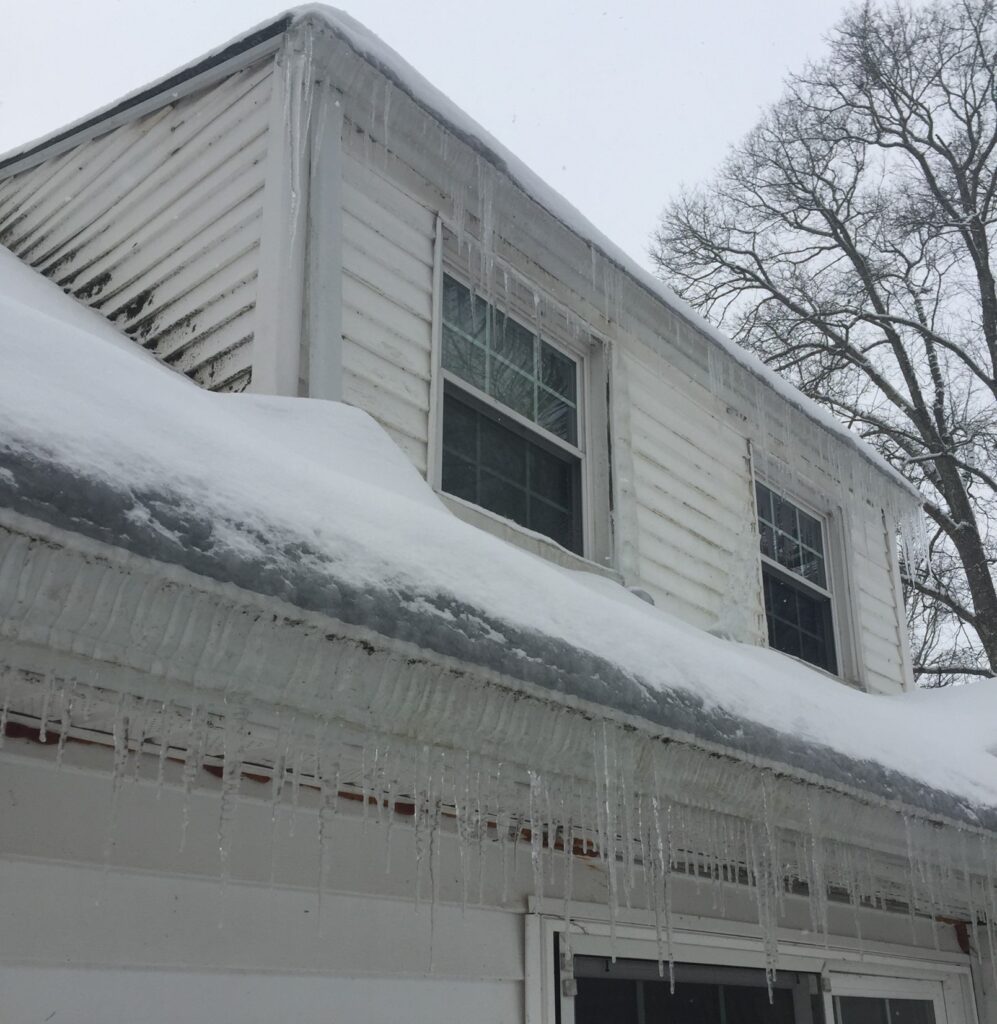Ice Dams
Ice dams are formed when snow melts off the roof and the runoff freezes at the eaves and in the gutter. This is caused by a warm attic and solar radiation. Warm air leaking from the living space into the attic and sunshine shining on the roof will heat the shingles or metal panels enough to melt the snow.
The runoff that travels down the roof will freeze when it reaches the cold eaves or travels over an uninsulated porch.
Damage
Ice dams can damage gutters, loosen shingles, rot wood, and cause water leaks into the house.
Prevention
The best way to prevent ice dams is to keep the entire surface of the roof cold.
Improve insulation to prevent heat loss from the living space into the attic. This includes adding insulation and sealing the attic floor where vents and wiring pass through.
Make sure all fans inside the house (bathroom, kitchen, dryer) exhaust to the outside of the building and not into the attic and that those vents are insulated if they pass through the attic.
Raise vent terminations higher above the roof. Some vents discharge warm air close to the roof’s surface which can cause snowmelt.
Make sure the roof is properly ventilated. Soffit and ridge ventilation is the most effective method, but make sure the soffits are not blocked by insulation.
Special Circumstances
Some roofs are more difficult to vent than others, like vaulted ceilings with no attics, roofs with skylights or flat roof dormers. Secondary strategies are necessary in these situations.
Removal
Calcium chloride ice melt in a mesh sock laid across the gutter will speed up the melting of the ice dam.
Hot water. Some roofing companies have a steamer that uses hot water to melt the dams. This method should be a last resort and only done under certain conditions because you are adding more water to the area.
Avoid using electric heat cables. They can damage shingles and use electricity, not to mention they rarely work and sometimes exacerbate the problem. Also do not use shovels, ice picks, hard rakes, or other tools that can damage the shingles.
And, whatever you do, DO NOT get up on an icy or snowy roof!
